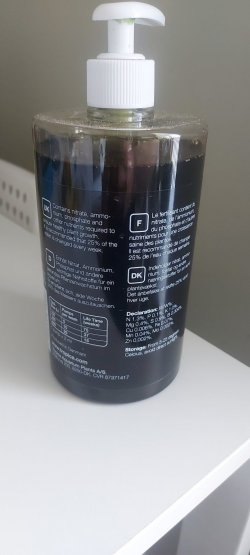The bottle says it contains ammonium, a form of ammonia, so that's where the ammonia has come from. I suggest you don't add any more till the cycle has finished.
Is 8 ppm the highest your nitrite tester goes? If it is, you could try mixing some tank and tap water 50:50 and see what reading that gives. If it's still the highest number, try 1 part tank to 4 parts tap (a 1 in 5 dilution) and test that. Once you get a reading somewhere on the scale, you'll know what to multiply it by to get the true level. If it turns out to be over 15 ppm, I would do a water change, big enough to get the reading onto the scale. 15 ppm nitrite is where the cycle stalls.
Once you've got nitrite down and the ammonium chloride has arrived, I would then add enough to get 1 ppm, the snack dose, dose #3, in the method in the link I've given you. The bottle says to add so many drops per American gallon which gives a dose of 2.4 ppm ammonia, so add a bit less than half of what the bottle says.
Hopefully the cycle won't take too much longer as you've already grown a lot of ammonia eaters. It's now waiting until the nitrite eaters grow some more.
Once you have fish, that fertiliser may not be a good idea as it contains ammonium. I would be reluctant to add that to a tank with fish. We grow the bacteria to remove the ammonia made by the fish; personally I wouldn't like to add more. There are some products designed for an underwater garden rather than a fish tank and this is possibly one of them.


